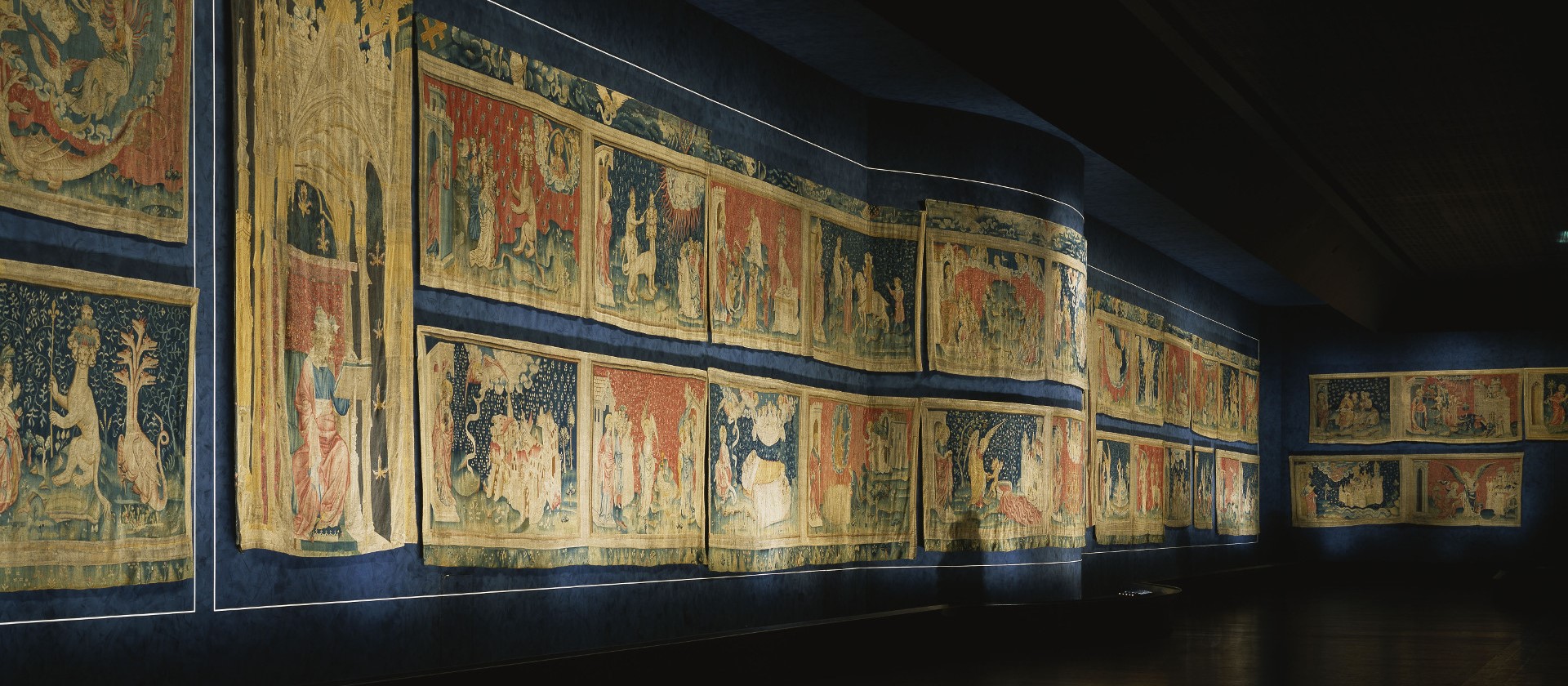José Maria C.S. André
On May 18, 2024, the newly-discovered fragments of the d’Angers tapestry illustrating the Apocalypse of St. John were publicly displayed for the first time. Commissioned around 1375 by the Duke Louis I of Anjou, the tapestry originally consisted of six pieces admeasuring 23 meters in length and 6 meters in height.
This masterpiece of the Middle Ages, like many other pieces of art, was very badly treated by the persecutors of the Church, in the name of an enlightened culture, which set itself the mission of eliminating the legacy of Catholicism. With contempt for the “obscurantists” of the Middle Ages, they cut the tapestry into pieces and made them into horse blankets and used them for other minor functions. Of the original 138 meters, only hundred meters remain, and the original 6 m height have been reduced to 4.5 m. But not even these remnants of the original panels were properly respected. It wasn’t until 1950 that the tapestry was recovered and exhibited to the public.
Four years ago, some other fragments of the tapestry were discovered in Paris, and it is these, that, recovered and studied, are now on display for the first time. As they were not exposed to light, the colours are in an extraordinary state of preservation, allowing us to admire the strength of the original colours, almost intact.
Renowned painters of the time worked on the tapestry, then woven with wool yarns and silk and gold threads by highly-skilled craftsmen. What remains is one of the few works from the Middle Ages to have survived the ravages of persecution, especially during the French Revolution.
The value of this work is exceptional, both for the quality of the composition and the execution. For example, the tapestry doesn’t have a back side made up of loose threads, because the threads are woven on both sides. This kept the ends of the threads protected inside the tapestry, preserving their vivid and dazzling colour.
The squares read like a comic strip, from left to right and top to bottom, illustrating the last book of the Bible, the Apocalypse of St. John. This book represents the unrelenting struggle of evil against God and the Church. It also represents the heavenly liturgy, the Saints and Angels worshipping God. It thus establishes a counterpoint between the troubles of the pilgrim Church on this earth and the glory of the Church triumphant in friendship with God. Originally, the images in the tapestry had captions to help interpret them, but this was one of the parts that was cut out and destroyed.
The ruthlessness with which someone was able to mistreat a tapestry of this quality reminds us of the 2023 attack on the Basilica of Angers. Fortunately, this time they didn’t manage to break into the tabernacle and desecrate the communion wafers kept there for the adoration of the faithful, they just decapitated the sculptures and destroyed the works of art. The faithful reacted to the vandalism with prayer and the celebration of the Eucharist. According to the parish priest, “we will offer these terrible acts at Mass on Sunday, the feast of Divine Mercy, so that Our Lord may forgive them.”
The French Minister of Culture in 2023, Abdul Malak, of Lebanese origin, condemned the act in these terms: “Statues beheaded, crosses broken, central altar looted. I strongly condemn this act of vandalism at the church of Sainte Madeleine in Angers. Attacking our heritage means attacking what underpins our shared history. Believers or not, we are all affected.”
The destruction of religious heritage is an opportunity to pray more. Appreciating it and recognizing the Church’s role in culture is right and brings people closer to God. In all cases, we must think of God first.
(Image caption: The remaining 100 meters of the tapestry are on display in a pavilion at the Château d’Angers.)


 Follow
Follow


